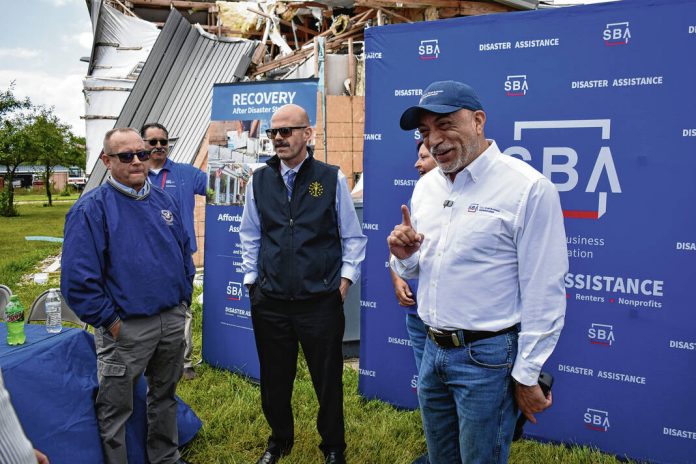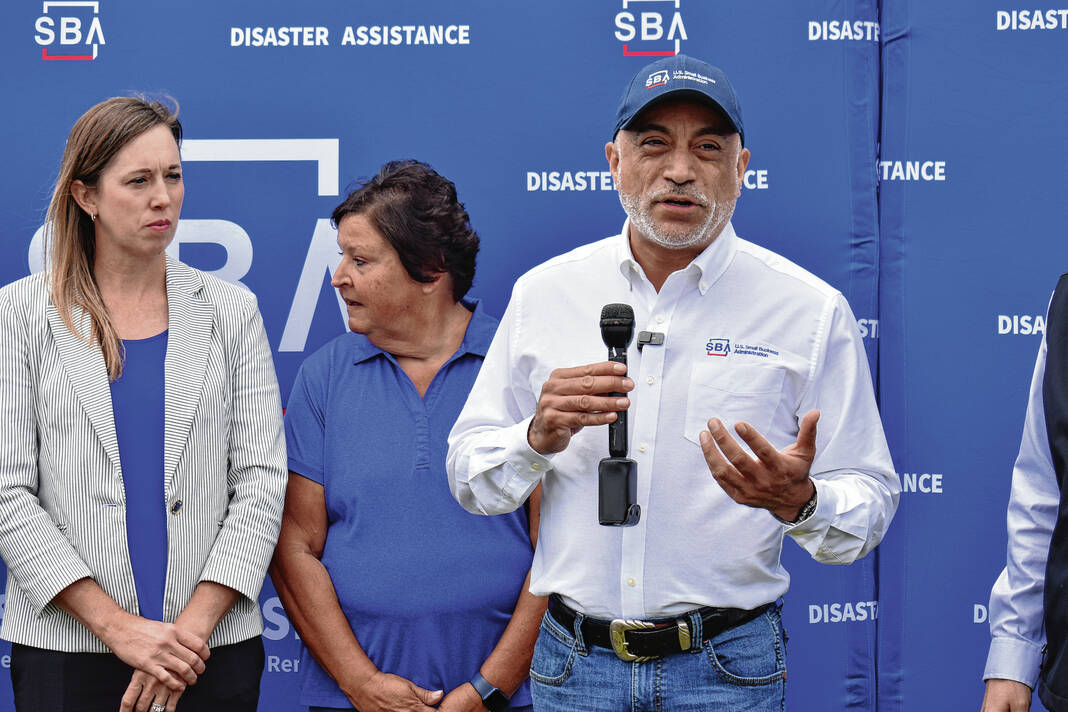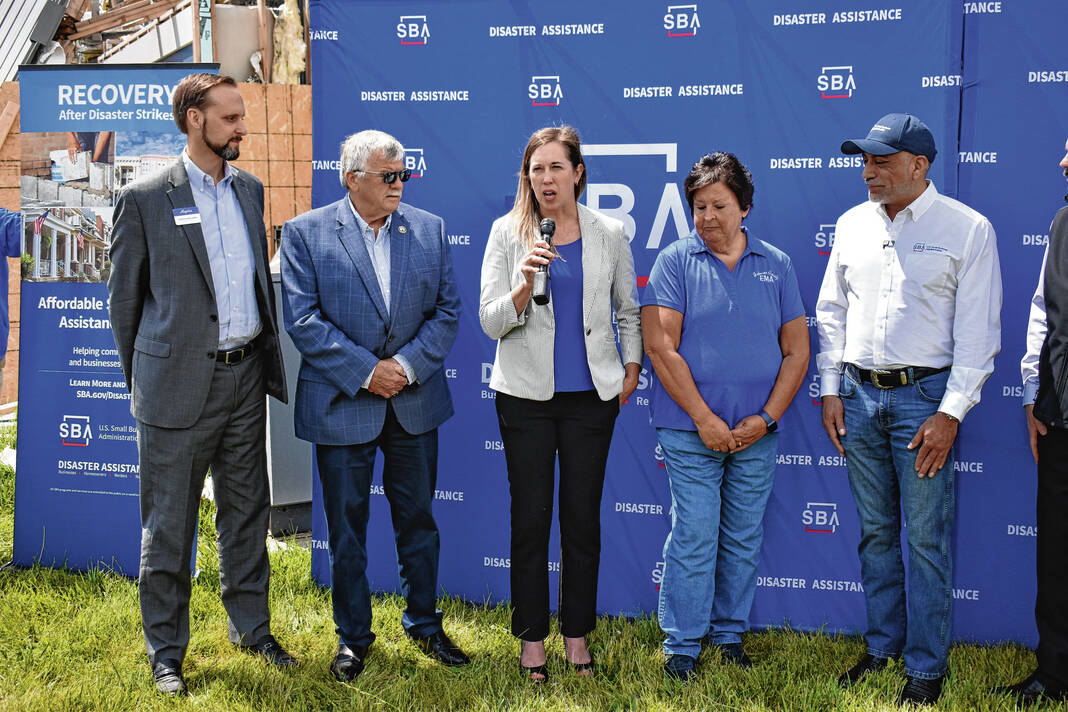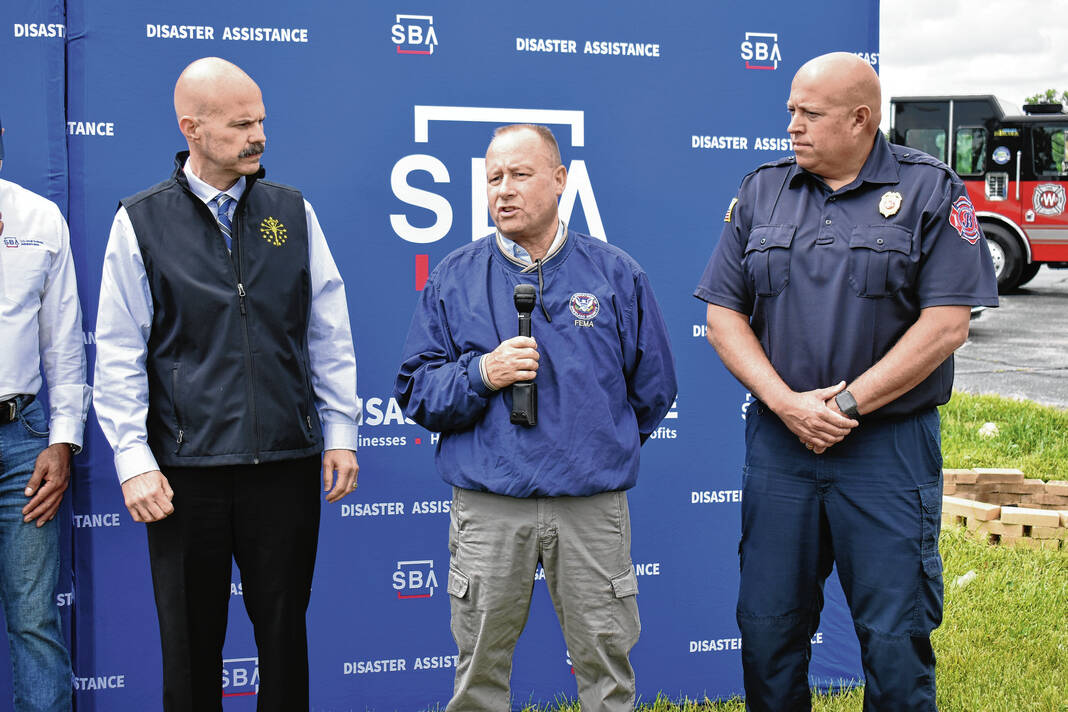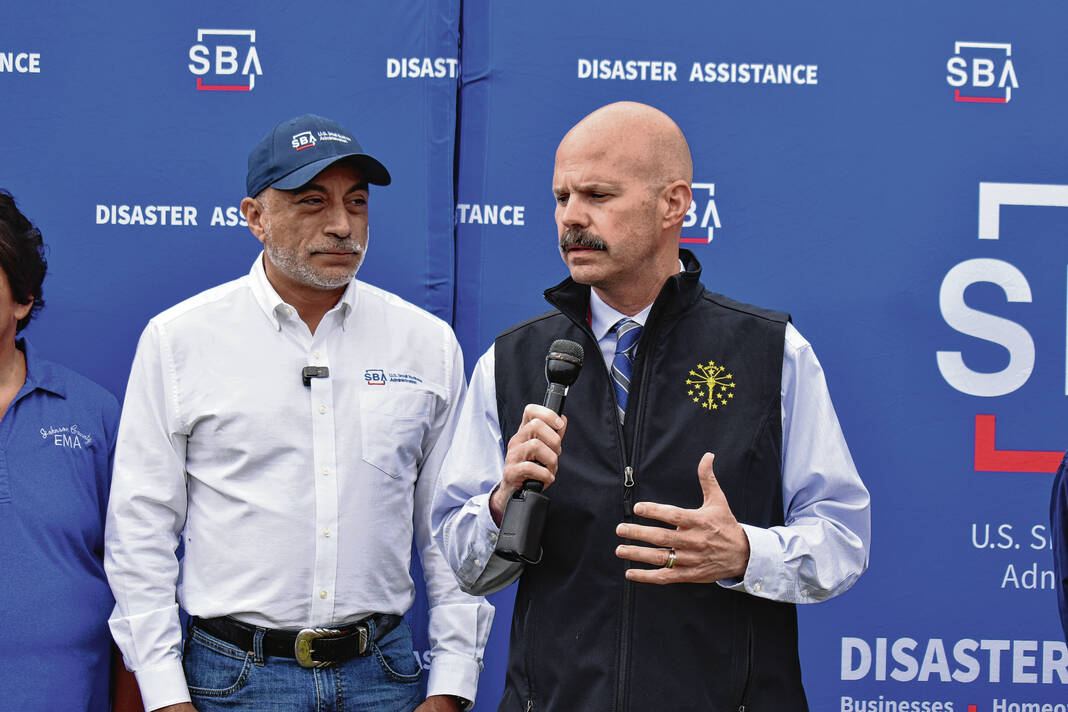A high-level Small Business Administration official visited Whiteland Monday, encouraging residents to apply for aid before a deadline passes later this week.
Francisco Sánchez Jr., associate administrator for the SBA’s Office of Recovery and Resilience, visited Whiteland Monday afternoon to discuss the agency’s containing efforts to encourage businesses and homeowners to leverage available low-cost federal disaster loans to recover and rebuild better and stronger. The loans were made available following the severe storms and tornadoes that affected Johnson County and several other Indiana counties on March 31 and April 1.
Since a federal disaster was declared in April, the SBA has paid out $8.5 million in assistance, in addition to the investment in assistance made by the Federal Emergency Management Agency. FEMA has put a little less than $2 million into the hands of individuals and families who are trying to get back on their feet. Hundreds of applicants are still working through the process, officials said.
During a press conference outside the damaged Whiteland Fire Department Monday that followed a tour of the town, Sánchez said he was struck by the collaboration and resilience of the community. The amount of devastation in the town was just another signal of the importance of why federal aid needed to be there as soon as possible as they worked with state and federal partners, he said.
“But having seen disasters across this country, what I see here already is a recipe for successful recovery,” Sánchez said.
Sánchez, along with local, state and other federal officials, later emphasized the upcoming deadline to apply for SBA assistance. Wednesday is the last day to apply for most disaster loans through the SBA, with the exception of economic injury loans, which have an application deadline of Jan. 15, 2024.
“It’s important to know that you do not have to ultimately take the loan if you apply, but we want to make sure you have that resource available, should you need it,” he said.
Additionally, following a policy change last year, those who receive the loans don’t have to make an initial payment on the loan for 12 months. Zero interest will accrue during this period, Sánchez said.
“So a great resource for our local businesses to be able to get the working capital they need to be able to both recover from the physical damage, potentially covering the economic loss, and also the ability to build back in a way that mitigates future potential tornadoes,” he said.
Wednesday is not only a deadline to apply for some SBA assistance, but also a deadline to apply for assistance through FEMA. It also is the last day that the agency’s Disaster Recovery Centers will be open, said Brian Schiller, federal coordinating officer for FEMA.
Schiller encourages residents to apply for aid now, and said residents shouldn’t feel like they need to have all the paperwork together to apply. All of the paperwork has to be submitted after a resident has applied for aid, he said.
“Please don’t think that you have to gather everything in order to provide the full application,” Schiller said. “You have, in some cases, 12 months and in other cases, up to 18 months to be able to do that.”
If survivors are waiting to hear from their insurance company and have not yet applied, they should go ahead and apply anyway. This includes people who have also applied for aid through SBA as well, he said.
Sánchez also highlighted a recent change that enables the SBA to provide aid more quickly. Last year, President Joe Biden signed the Disaster Assistance for Rural Communities Act which enables the agency to be on the ground in rural communities about 40 to 50 more times a year than the SBA usually is, he said.
The agency has also lowered the threshold for when they could make a declaration that allows them to provide disaster assistance. Previously, the agency could make a declaration based on damage to at least 25 homes, businesses or other eligible institutions, but now a declaration can be made with only one damaged property in a rural area when the county has received a major disaster declaration from the president, officials said.
“We have to make sure that we are investing as much in rural as we are in our urban economies to make sure that both of those can thrive, and so that’s our commitment,” Sánchez said.
Christian Maslowski, the president and CEO of Aspire Johnson County, also emphasized the importance of applying for SBA assistance before its too late, including the economic injury loans.
“My fellow business leaders and business owners, please consider your economic losses, it’s not always physical,” Masolowski said. “So please do remember that if you suffer because of a client base that suffered or because of a vendor that suffered, you may be eligible.”
Indiana Department of Homeland Security Director Joel Thacker thanked both local and federal officials for their collaboration and efforts to help the state recover. The disaster response both starts and ends locally, he said.
“These agencies, working with (the) state, locals, have put money directly back into the pockets of survivors,” Thacker said. “It’s important to try to get them back on the road to recovery as quickly as possible.”
Whiteland Fire Chief Eric Funkhouser, along with Johnson County Emergency Management Director Stephanie Sichting and Whiteland Acting Town Manager Carmen Young, also expressed thanks to federal and state officials for their assistance as the town recovers. Funkhouser also thanked the volunteers who came out in the days after to help clean up the town.
“We were driving around today, it’s pretty amazing to see how far we’ve come in the past two and a half months,” Funkhouser said. “There are places that you wouldn’t even know that it went through, just from the cleanup by the volunteers and everybody that just chipped in and helped out.”
Young emphasized that those who still need aid are not alone.
“We want our residents and those affected by the tornado, whether they live in the town of Whiteland or near the town of Whiteland, (to know) that they’re not alone,” she said. “They can still call us up if they need assistance and that guidance.”
To learn more about the SBA’s disaster loan process, you can check out the document below.


